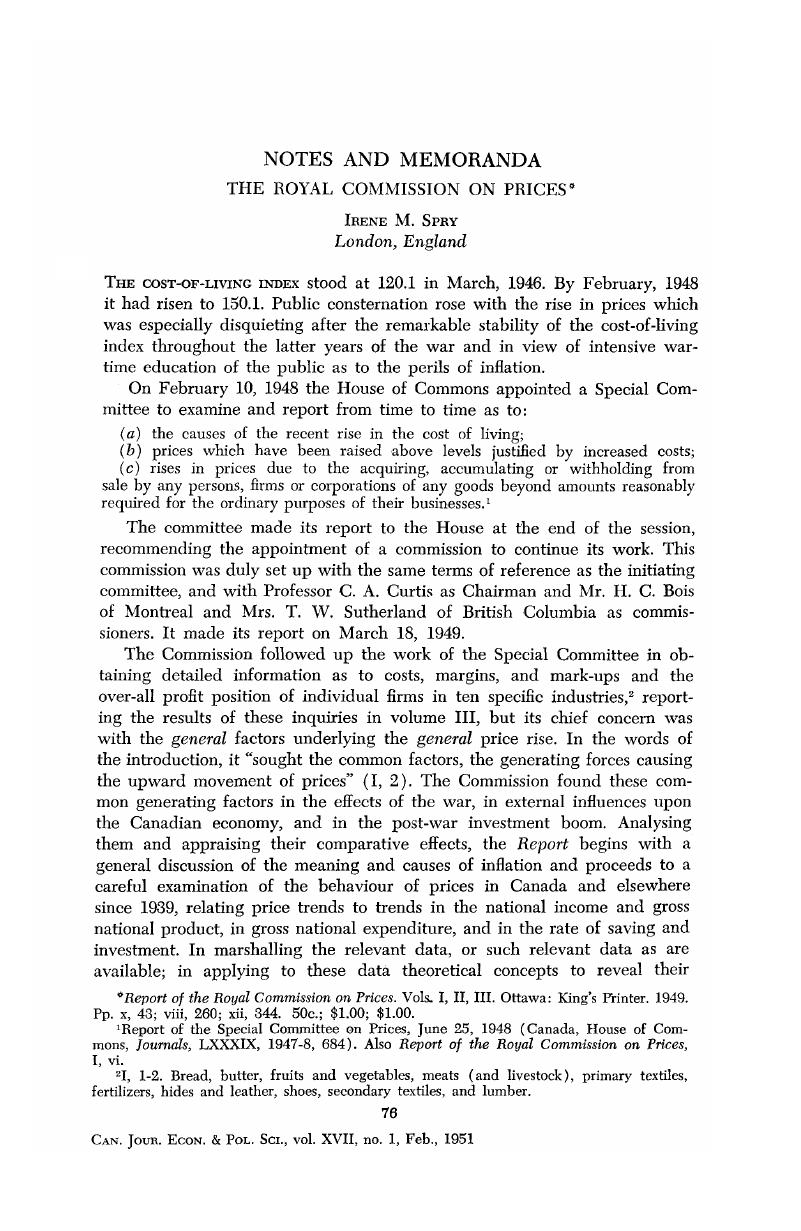No CrossRef data available.
Published online by Cambridge University Press: 07 November 2014

Report of the Royal Commission on Prices. Vols. I, II, III. Ottawa: King's Printer. 1949. Pp. x, 43; viii, 260; xii, 344. 50c.; $1.00; $1.00.
1 Report of the Special Committee on Prices, June 25, 1948 ( Canada, House of Commons, Journals, LXXXIX, 1947–1948, 684 Google Scholar). Also Report of the Royal Commission on Prices, I, vi.Google Scholar
2 I, 1-2. Bread, butter, fruits and vegetables, meats (and livestock), primary textiles, fertilizers, hides and leather, shoes, secondary textiles, and lumber.
3 Reynolds, Lloyd G., The Control of Competition in Canada (Cambridge, Mass., 1940), 277.CrossRefGoogle Scholar
4 See especially II, chaps. 3, 4, 6, 7; III, chap. 12.
5 Reviewed in Canadian Journal of Economics and Political Science, XVI, 02 1950, 83–97.Google Scholar
6 A passage in the summary in volume I (p. 28) suggests a possible limitation of output in the cotton industry: “Underproduction may also result where there are only a few firms in the field and the spur of competition is not very strong. An example of this may be seen in the primary cotton textiles industry, where production has been decreasing since the war.” In the full description of the situation in volume III (chap. 6) one gets the impression that the drop in production is the result of shortage of labour.
7 Report of the Royal Commission on Price Spreads (Ottawa, 1935).Google Scholar
8 II, 202. But “after deducting tax, corporate profits formed a smaller proportion of this total of Gross National Product than in pre-war years.”